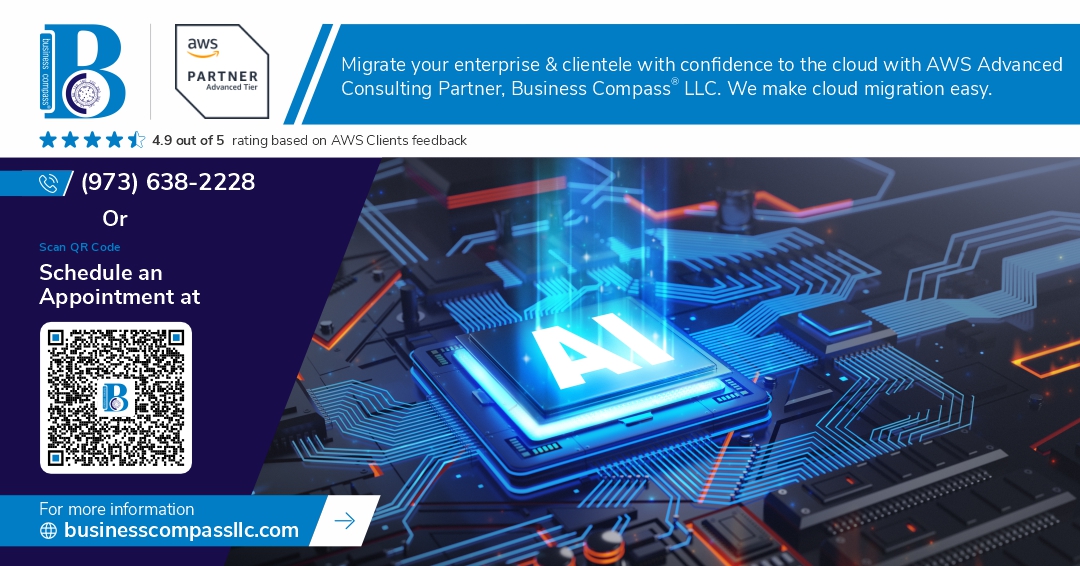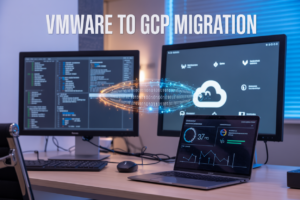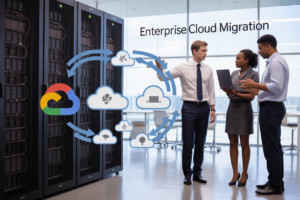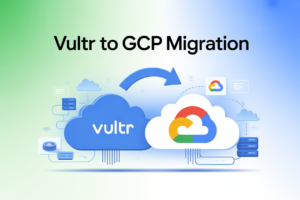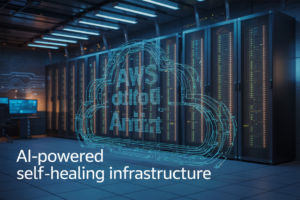AI governance doesn’t have to be a headache. For data scientists, ML engineers, and compliance officers working with AWS, the right tools make all the difference in managing AI systems responsibly. In this guide, we’ll explore how AWS services support regulatory compliance for your AI models, show you practical security measures to protect sensitive data, and walk through setting up explainability features that help you understand how your models make decisions.
Understanding AI Governance Fundamentals in AWS
Key AI compliance challenges faced by modern enterprises
Running AI models isn’t just about tech brilliance anymore. It’s about navigating a minefield of compliance issues that can explode your reputation and bottom line if mishandled.
The biggest headaches companies face? Data privacy tops the list. Your AI is only as good as the data it trains on, and using personal information without proper consent is a fast track to massive fines. Just ask the companies hit with GDPR penalties—some reaching into hundreds of millions.
Bias and fairness aren’t just buzzwords. They’re compliance nightmares waiting to happen. An AI that discriminates based on race, gender, or age isn’t just ethically wrong—it’s legally problematic across multiple jurisdictions.
Then there’s the black box problem. Regulators increasingly demand you explain how your AI makes decisions. When your model recommends denying someone a loan, you better be able to tell them why in plain English.
Documentation requirements are also multiplying faster than rabbits. Model cards, impact assessments, audit trails—the paperwork alone can overwhelm teams that thought they were building algorithms, not filing cabinets.
AWS’s approach to AI governance and risk management
AWS doesn’t just give you AI tools and wish you good luck with the compliance stuff. They’ve built governance right into the infrastructure.
Their approach centers on three pillars: visibility, control, and security. The SageMaker platform tracks model lineage automatically, showing you exactly what data trained which version of which model. No more guesswork when auditors come knocking.
Risk scoring is baked into the system. AWS helps you categorize models based on their potential impact—an AI that recommends movies needs different governance than one that decides medical treatments.
The coolest part? They’ve automated a ton of the governance busywork. Drift detection runs continuously to catch models that start behaving differently. Policy guardrails prevent developers from accidentally deploying non-compliant models.
For teams drowning in compliance tasks, AWS Model Cards are a lifesaver. They document everything about your model in a standardized format that satisfies most regulatory requirements without extra work.
Regulatory landscape affecting AI models and how AWS addresses it
The AI regulatory world is a patchwork quilt that’s getting more complicated daily.
Europe leads with the AI Act, which categorizes AI systems by risk level and regulates accordingly. High-risk systems face stringent requirements for transparency, human oversight, and robustness.
The U.S. takes a sector-specific approach. Financial services face fairness requirements from the CFPB. Healthcare AI must meet FDA standards. State laws like California’s add another layer of complexity.
AWS tackles this regulatory maze with region-specific compliance features. Their European data centers implement additional safeguards aligning with the AI Act. For healthcare customers, they offer HIPAA-eligible services with built-in compliance controls.
The platform’s governance features adapt to different regulatory frameworks through configurable policies. Need to meet New York’s insurance algorithm requirements? There’s a template for that.
What’s particularly smart is how AWS keeps pace with evolving regulations. Their policy templates update when laws change, so you’re not stuck rebuilding governance frameworks every time a new requirement drops.
Essential AWS Services for AI Model Compliance
Amazon SageMaker and its built-in compliance features
Running AI models that meet regulatory requirements isn’t just nice-to-have anymore—it’s critical. Amazon SageMaker makes this easier with baked-in compliance features that save you from building everything from scratch.
SageMaker handles a ton of the heavy lifting with:
- Model Cards that document everything about your model—from training data to performance metrics to intended uses
- Model Registry for versioning and approval workflows
- Automated lineage tracking that records the entire history of your model development
- Bias detection tools that catch unfair predictions before they cause problems
What’s cool is how SageMaker integrates these features seamlessly. You don’t need to bolt on third-party tools or write custom code to maintain compliance records.
AWS Artifact for compliance documentation
Ever been asked to prove your AI systems meet industry standards? AWS Artifact is your one-stop shop for all that paperwork.
Artifact gives you on-demand access to AWS’s compliance reports—SOC, PCI, HIPAA, you name it. Instead of hunting down documentation across different sources, you get:
- Self-service access to AWS compliance certifications
- Agreements you can digitally accept for your organization
- Reports specific to your region and the services you use
AWS Config for continuous compliance monitoring
The compliance game never stops. AWS Config keeps you from falling behind by:
- Creating rules that automatically check if your AI resources meet your standards
- Recording configuration changes to provide an audit trail
- Sending alerts when something drifts out of compliance
- Providing dashboards that show your compliance status at a glance
This continuous monitoring means you’ll catch issues before auditors do.
Amazon Macie for sensitive data protection
AI models love data—but some of that data needs special protection. Amazon Macie helps by:
- Automatically discovering sensitive data in your S3 buckets
- Classifying personal information using machine learning
- Providing detailed reports on where sensitive data lives
- Monitoring for unusual access patterns that could signal a breach
With Macie watching your data, you can focus on building great AI without worrying about accidentally exposing protected information.
Securing Your AI Models on AWS
A. Encryption strategies for AI data at rest and in transit
Security isn’t optional when it comes to AI models on AWS – it’s mission-critical. Your data deserves bank-vault level protection, and AWS provides exactly that.
For data at rest, AWS offers multiple encryption options:
- S3 encryption for your training datasets using SSE-S3, SSE-KMS, or customer-managed keys
- EBS volume encryption for compute instances running your training jobs
- SageMaker model artifacts encryption using KMS keys
When your AI data is moving around, you need encryption in transit:
- TLS encryption for all API calls to SageMaker endpoints
- HTTPS protocols for data transfer between services
- VPC endpoints to keep traffic within the AWS network
The smart move? Implement both. Here’s a quick comparison:
| Encryption Type | AWS Solution | When to Use |
|---|---|---|
| At Rest | KMS + S3 | For stored training data, model artifacts |
| In Transit | TLS + VPC Endpoints | For API calls, inter-service communication |
B. AWS Identity and Access Management (IAM) for model access control
Controlling who can do what with your AI models is non-negotiable. IAM is your gatekeeper.
The principle of least privilege should be your North Star. Only give access to what’s absolutely needed – nothing more.
Create role-based access patterns:
- Data scientists need model development permissions
- MLOps engineers require deployment rights
- Business users might only need inference access
IAM policies can get granular. For example:
{
"Effect": "Allow",
"Action": [
"sagemaker:InvokeEndpoint"
],
"Resource": "arn:aws:sagemaker:*:*:endpoint/my-prod-model"
}
This lets users query your model but not modify it. Pretty neat, right?
Don’t forget service roles! SageMaker needs permissions to access resources on your behalf during training and inference.
C. VPC configurations to protect AI workloads
Your AI infrastructure needs its own private neighborhood. That’s where VPCs come in.
A well-designed VPC setup for AI workloads includes:
- Private subnets for your training jobs and inference endpoints
- Public subnets only where absolutely necessary
- Network ACLs and security groups with tight rules
- VPC endpoints for AWS services to avoid public internet exposure
The real magic happens with subnet isolation. Keep your training environments separate from production inference endpoints. If someone compromises one, they don’t get the keys to the kingdom.
Security groups should follow the “deny all, permit by exception” rule. Only open what you need:
- Allow HTTPS (443) for API calls
- Permit specific ports for monitoring
- Block everything else
For extra peace of mind, use AWS PrivateLink to create private connections between your VPC and supported AWS services. Your model traffic never hits the public internet.
D. Security best practices for model deployment pipelines
CI/CD for AI isn’t just about speed – it’s about building in security from the ground up.
Start with these pipeline security essentials:
- Scan dependencies for vulnerabilities before building containers
- Digitally sign your model artifacts with AWS Signer
- Version and immutably store all models in S3 with object locks
- Implement approval gates before production deployment
AWS CodePipeline combined with CodeBuild gives you a solid foundation. But the secret sauce is in the verification steps.
Before any model hits production, your pipeline should automatically:
- Run security scans on container images
- Validate model behavior against test cases
- Check for data drift and model drift
- Ensure compliance with your governance rules
Secrets management is critical too. Never hardcode credentials in your pipeline configs or Dockerfiles. Use AWS Secrets Manager instead – your future self will thank you.
E. Automated security monitoring with AWS GuardDuty
You can’t watch your AI infrastructure 24/7, but GuardDuty can.
GuardDuty is like having a cybersecurity expert constantly scanning your AWS environment for suspicious activity. It uses machine learning (yes, AI watching your AI) to detect unusual patterns.
What makes it perfect for AI workloads:
- Detects unauthorized access to S3 buckets containing training data
- Identifies unusual API calls to your model endpoints
- Alerts on potential data exfiltration attempts
- Monitors for crypto mining (a common attack on GPU instances)
Set up GuardDuty findings to trigger automated responses:
- Immediate isolation of compromised resources
- Snapshot creation for forensic analysis
- Auto-remediation of common issues
- Alert notification to your security team
The integration with AWS Security Hub gives you a unified view of your security posture across all your AI workloads. One dashboard to rule them all.
Don’t just set it and forget it though. Regularly review your GuardDuty findings and tune the alerting thresholds to reduce false positives.
Implementing Model Explainability and Fairness
SageMaker Clarify for bias detection and mitigation
You can’t build trustworthy AI without tackling bias head-on. AWS SageMaker Clarify doesn’t just find bias—it helps you fix it.
Clarify analyzes your training data and model predictions to spot unfair patterns across protected groups. It measures pre-training bias with metrics like Class Imbalance and Post-training bias with Disparate Impact Analysis.
What’s great about Clarify is how it integrates directly into your ML pipeline. Run bias checks during preprocessing, after training, and in production without rebuilding your workflow.
Here’s what you can do with it:
- Identify biased features before they cause problems
- Compare model behavior across different demographic groups
- Generate reports that explain why your model is making certain decisions
- Configure automated bias alerts when metrics drift beyond thresholds
Tools for model interpretability and transparency
Black-box AI won’t cut it anymore. Regulators and users want to know how your models work.
SageMaker offers multiple ways to peek inside your models:
- SHAP (SHapley Additive exPlanations): Shows which features influenced specific predictions
- Feature importance: Ranks which inputs matter most overall
- Partial dependence plots: Visualizes how changing a feature affects outcomes
These tools answer questions like “Why was this loan application rejected?” or “Which patient symptoms triggered this diagnosis?”
The best part? You don’t need separate tools. These capabilities are built right into the SageMaker ecosystem.
Documenting model decisions for regulatory requirements
Documentation isn’t optional anymore. It’s a cornerstone of AI governance.
AWS helps you create model cards and datasheets that document:
- Model purpose and limitations
- Training data characteristics and preprocessing steps
- Performance metrics across different population segments
- Testing procedures and validation results
SageMaker Model Cards automates this process, generating reports you can share with auditors or regulators. It maintains version history so you can track changes over time.
Smart teams are building documentation as they go, not scrambling to create it when regulators come knocking.
Fairness metrics and monitoring dashboards
Fairness isn’t a one-time check—it’s an ongoing commitment.
AWS CloudWatch and SageMaker Model Monitor let you track fairness metrics in real-time:
- Set up custom dashboards showing bias metrics across user segments
- Configure alerts when fairness drifts beyond acceptable thresholds
- Compare model behavior before and after mitigation strategies
- Visualize trends over time to spot emerging issues
These dashboards aren’t just for data scientists. They’re designed for stakeholders across your organization, from legal teams to executives who need clear insights without getting lost in technical details.
The companies getting AI governance right are the ones making fairness visible and actionable at every level of the organization.
Building a Robust AI Governance Framework
Setting up model risk assessment procedures
Building your AI governance isn’t a luxury—it’s business survival 101. And it starts with proper risk assessment.
AWS makes this easier with Amazon SageMaker Model Cards. These aren’t just fancy documentation tools. They’re your first defense line, helping you identify potential model failures before they happen.
Start by categorizing your models based on risk:
- Low-risk: Minor impact on decisions
- Medium-risk: Moderate business impact
- High-risk: Critical impact on customers or operations
For each model, document:
- The data it uses
- How it makes decisions
- Known limitations
- Potential biases
Don’t just set it and forget it. Risk profiles change as models evolve. Schedule quarterly reassessments—more frequently for high-risk models.
Creating model inventories and documentation systems
Ever lost track of which model is running where? You’re not alone.
AWS Systems Manager helps create a centralized inventory of all your models. Think of it as your AI family tree.
Your documentation should answer:
- Who created the model?
- What business problem does it solve?
- Which datasets trained it?
- How is performance measured?
- Where is it deployed?
I recommend structuring your inventory like this:
| Field | Description | Example |
|---|---|---|
| Model ID | Unique identifier | CUST-CHURN-001 |
| Purpose | Business function | Customer churn prediction |
| Risk Level | Impact assessment | Medium |
| Owner | Responsible team | Data Science Team B |
| Deployment | Where it’s running | Production API Gateway |
Implementing model validation and testing protocols
Your model passed all the tests in development. Great! But the real world is messy.
Set up a validation pipeline with these key stages:
- Technical validation (Does it work?)
- Business validation (Does it solve the problem?)
- Ethical validation (Is it fair and unbiased?)
AWS Step Functions can orchestrate this entire validation workflow. It enforces consistent validation across all your models.
For critical models, implement A/B testing before full deployment. Compare your new model against baseline performance using Amazon CloudWatch metrics.
Don’t just check accuracy. Test for:
- Drift in input data
- Latency under load
- Fairness across protected groups
- Security vulnerabilities
Establishing model performance monitoring
Models decay over time. Period.
Set up continuous monitoring using Amazon SageMaker Model Monitor. It automatically tracks:
- Data quality
- Model quality
- Bias drift
- Feature attribution drift
Configure alerting thresholds based on your risk assessment. High-risk models might trigger alerts with just 5% performance drop, while low-risk ones can tolerate more drift.
Create dashboards that business stakeholders can understand. Technical metrics mean nothing if decision-makers can’t interpret them.
Designing incident response plans for AI systems
AI failures happen. Your response plan determines whether it’s a blip or a disaster.
Document these steps for each potential failure:
- Detection mechanisms
- Immediate containment actions
- Investigation procedures
- Remediation options
- Communication templates
For critical models, create “break glass” procedures that can instantly:
- Disable the model
- Revert to a previous version
- Switch to human review
Run quarterly tabletop exercises. Simulate different failure scenarios and time your team’s response. AWS Fault Injection Simulator can help create realistic test scenarios without affecting production.
Remember: the goal isn’t to prevent all failures—it’s to recover gracefully when they happen.
Managing AI governance effectively is no longer optional in today’s regulatory landscape. AWS offers comprehensive tools and services that enable organizations to maintain compliance, security, and transparency throughout the AI lifecycle. From Amazon SageMaker’s governance capabilities to CloudWatch’s monitoring features, AWS provides the infrastructure needed to implement responsible AI practices while protecting sensitive data.
As you build your AI governance framework, remember that compliance and security aren’t just technical requirements—they’re fundamental business necessities that build trust with your customers and stakeholders. Start by implementing these AWS services incrementally, focusing first on your highest-risk models and data. By establishing strong governance practices today, you’ll be well-positioned to navigate the evolving AI regulatory landscape while delivering innovative, trustworthy AI solutions.










